BACK TO finalistS
Finalist
THREADS OF RESILIENCE: MATERIAL EXPLORATIONS IN ROOFTOP CONNECTIVITY, DELHI GATE, WALLED CITY OF LAHORE
‘Threads of Resilience: Material Explorations in Rooftop Connectivity, Delhi Gate, Walled city of Lahore.’ The walled city of Lahore is one of the oldest and densest settlements in Lahore, renowned for its rich heritage of art, architecture and culture dating back to the Mughal Era, this project explores the intersection of traditional textile techniques, innovative […]

‘Threads of Resilience: Material Explorations in Rooftop Connectivity, Delhi Gate, Walled city of Lahore.’
The walled city of Lahore is one of the oldest and densest settlements in Lahore, renowned for its rich heritage of art, architecture and culture dating back to the Mughal Era, this project explores the intersection of traditional textile techniques, innovative architectural design, and sustainable material use to create vibrant and functional spaces for children in the historic locality. The aim is to address the challenges posed by the dense urban fabric and enhance the quality of life for its youngest inhabitants.
The Walled City is characterized by narrow, winding passageways and towering mixed-use buildings, creating a dark and confined environment. This urban density restricts natural light, airflow, and open spaces for children to play, contributing to a significant vitamin D deficiency among the youth. The main stakeholders for this project are the children of the Walled City, who need safe, accessible, and engaging spaces for recreation and social interaction.
The foundation of this project lies in understanding the historical and cultural significance of textiles in the Walled City. Textiles have been an integral part of the city's artistic and architectural heritage, influencing various forms of expression and construction. By studying this rich history, the project seeks to draw parallels between traditional textile techniques and contemporary architectural practices.
The research journey spanned theoretical discussions on stitches and textile techniques to hands-on exploration of found materials on the site. The goal was to synthesize sustainable and contextually responsive architectural solutions, considering the ecological impact of materials, waste management strategies, and the cultural context of the Walled City. This approach ensured a holistic and informed design process.
Conceptually, the project is rooted in the seamless integration of traditional textile techniques, especially knitting, with architectural materiality. The concept extends beyond theoretical discussions, manifesting in the tangible utilization of found objects and scrap materials. Acrylic wool, bendable metal wires, cane, and bamboo chicks are not just elements; they are integral components of an innovative architectural language that challenges conventional notions of construction. This project transforms knitting into a robust and versatile architectural technique.
The design creatively utilizes knitted elements to allow indirect light, reinterpreting the urban fabric with sensitivity to the local context. Design sensitivity is inherent in the project's response to the practical needs of the community. Materials like acrylic wool are chosen not just for their visual appeal but for their ability to create a safe and vibrant space for children to play. Beyond aesthetics, design sensitivity embraces functionality, contributing to the fundamental well-being of the inhabitants within the constraints of the urban environment.
Sustainability is not merely a goal but a commitment evident in the project's use of found and repurposed materials. The reduced carbon footprint is a result of sourcing materials locally and repurposing elements that might have otherwise been discarded. Concrete application is thoughtfully limited, minimizing environmental impact and advocating for sustainable design thinking within the urban context.
Placemaking becomes a pivotal aspect of the project, responding to the spatial constraints of the Walled City. The design aims to create a place for social interaction and play, recognizing the deficiency of recreational spaces, especially for children. The meticulous consideration of indirect light and waterproofing ensures that the space is not only functional but also conducive to positive interactions, making it a beacon for placemaking within the historical and cultural context of Lahore echoing a vision where adaptability, sustainability, and community thrive in unison.
The project redefines spatial appreciation and visual impacts, recognizing the need for adaptable and sustainable solutions. By embracing knitting as a construction technique and experimenting with unconventional materials, the project sets a precedent for future-proof designs prioritizing innovation, sustainability, and community well-being.
In Conclusion, this project intertwines tradition and innovation, offering a sustainable beacon for the future. As acrylic wool and bendable metal wires knit a resilient narrative, the design stands not only as a structure but as a testament to the transformative potential of thoughtful architecture by addressing the unique challenges of the Walled City, it creates a vibrant and functional space that not only celebrates the rich cultural heritage of Lahore but fosters a sense of belonging and improves the quality of life for its youngest residents.
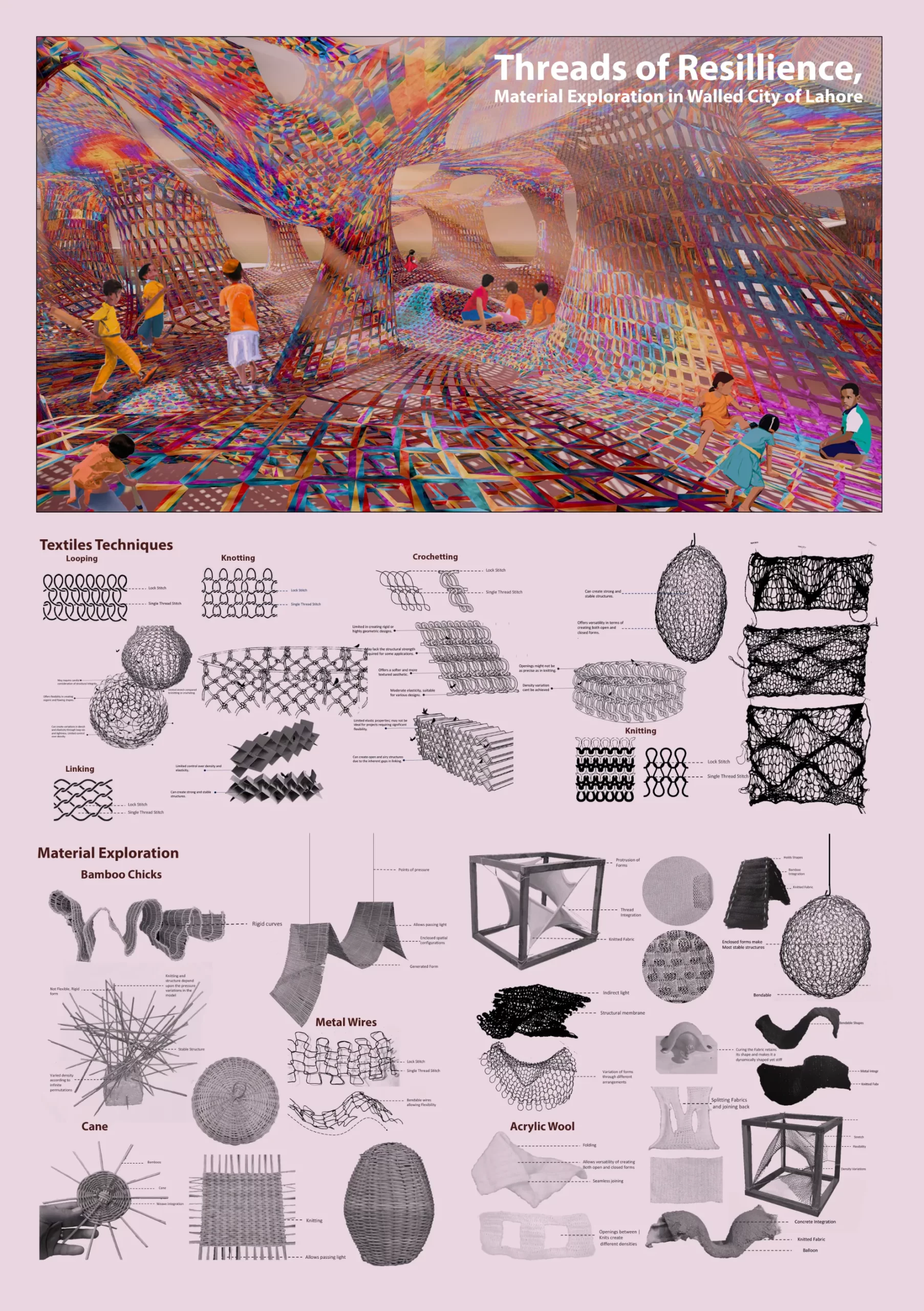
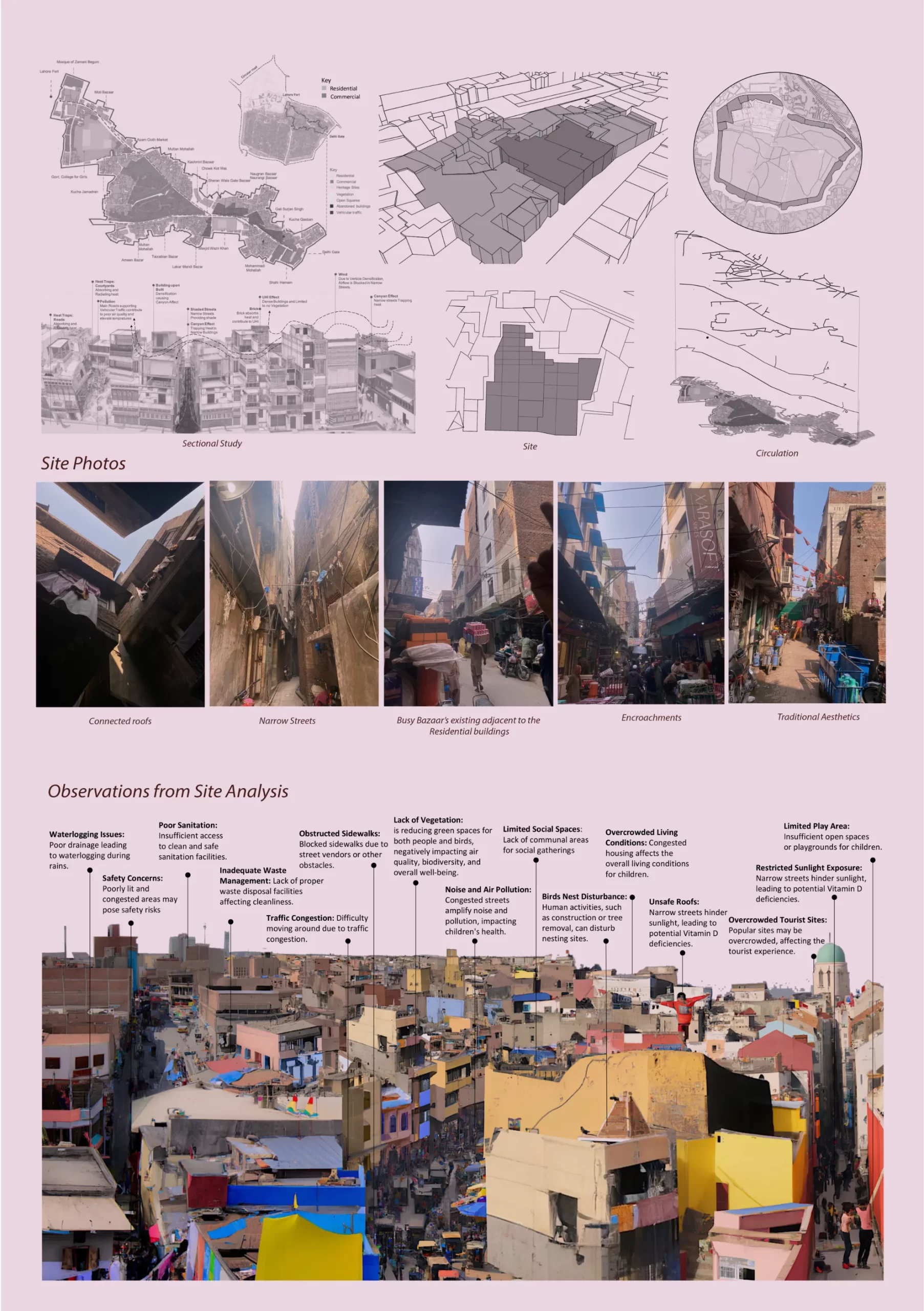

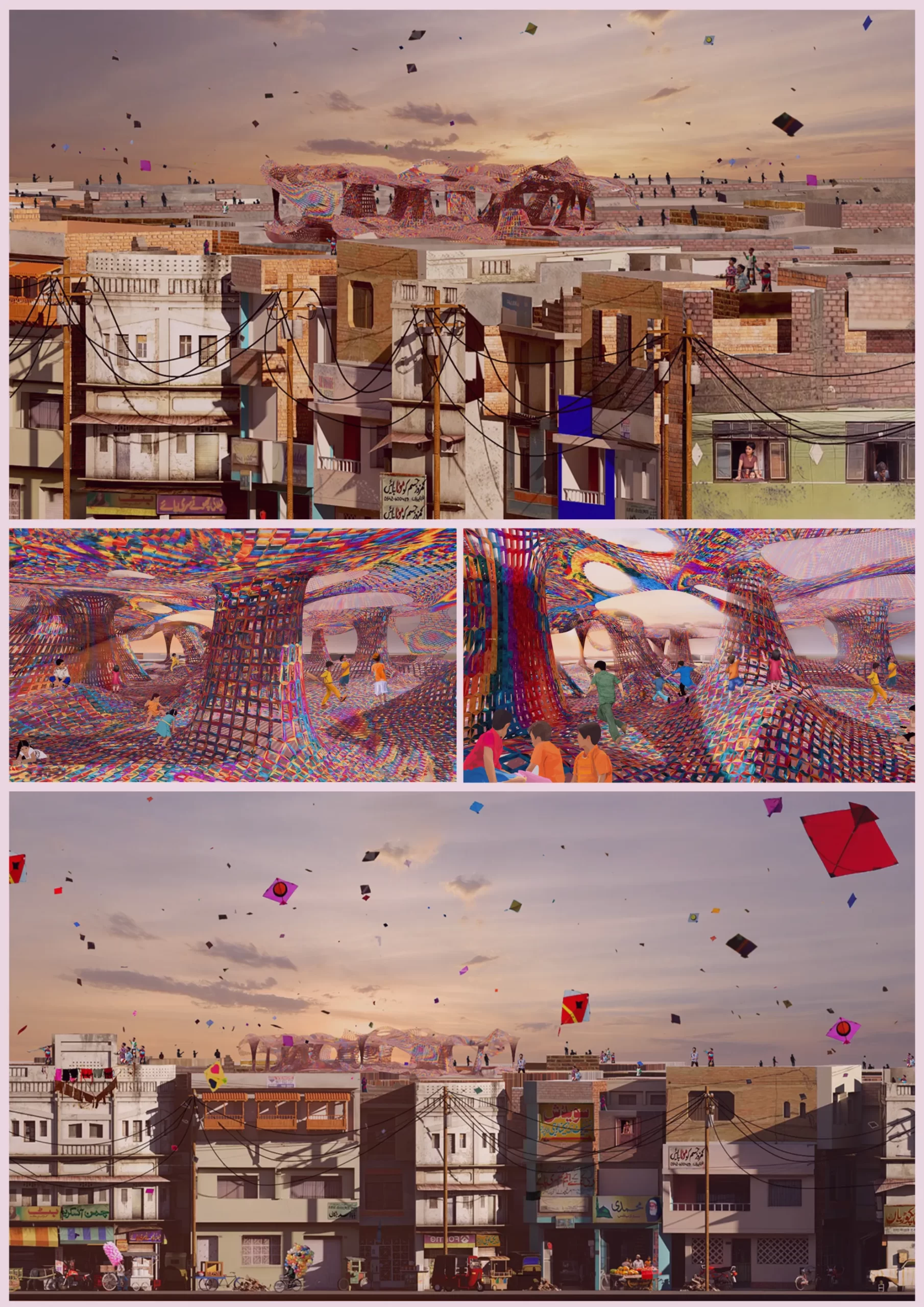
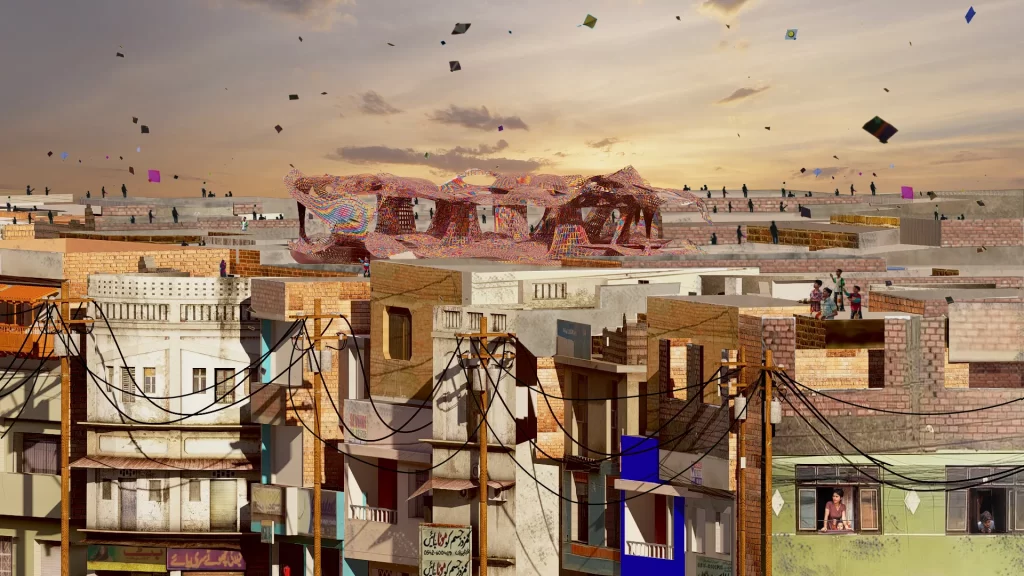
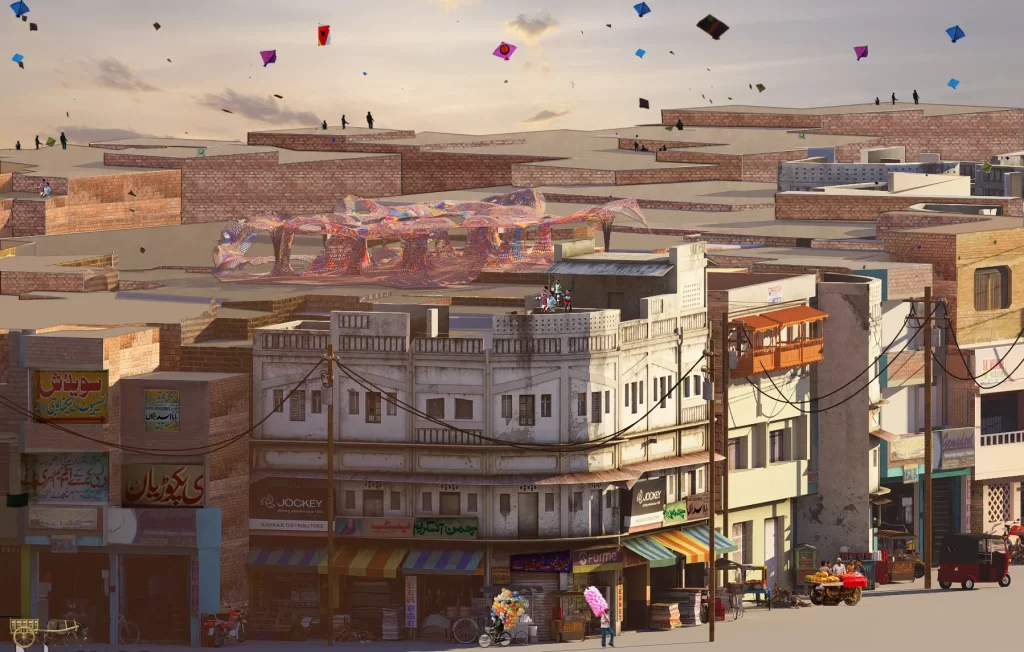
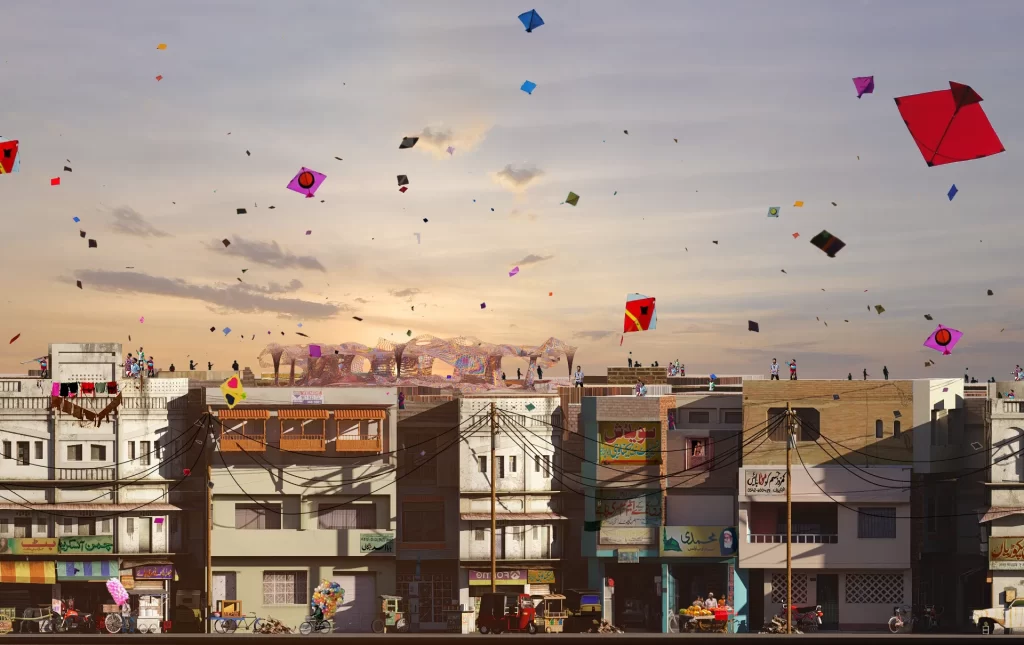
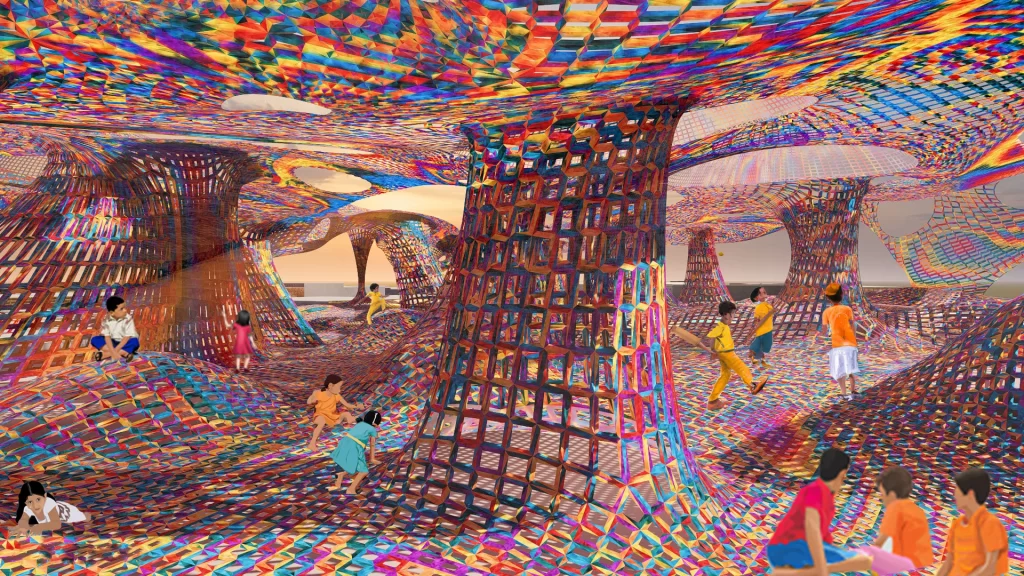
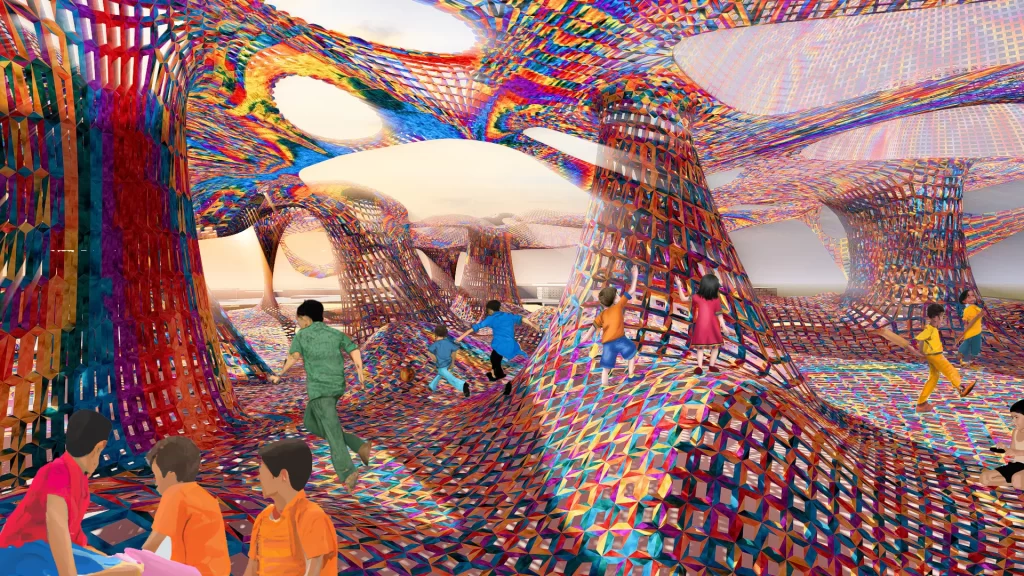
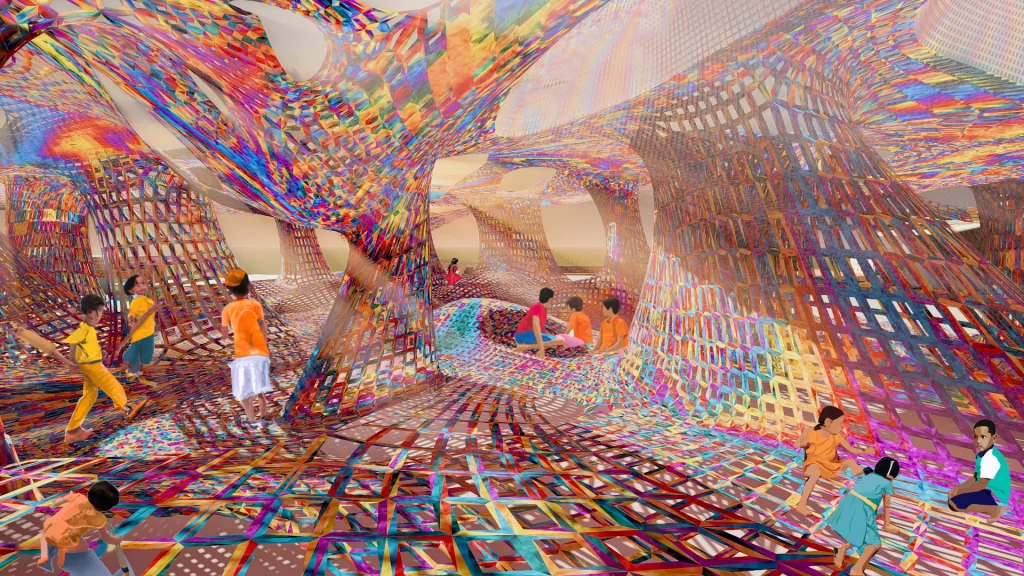
Showcase your design to an international audience
SUBMIT NOW
Image: Agrapolis Urban Permaculture Farm by David Johanes Palar
Top
‘Threads of Resilience: Material Explorations in Rooftop Connectivity, Delhi Gate, Walled city of Lahore.’ The walled city of Lahore is one of the oldest and densest settlements in Lahore, renowned for its rich heritage of art, architecture and culture dating back to the Mughal Era, this project explores the intersection of traditional textile techniques, innovative architectural design, and sustainable material use to create vibrant and functional spaces for children in the historic locality. The aim is to address the challenges posed by the dense urban fabric and enhance the quality of life for its youngest inhabitants. The Walled City is characterized by narrow, winding passageways and towering mixed-use buildings, creating a dark and confined environment. This urban density restricts natural light, airflow, and open spaces for children to play, contributing to a significant vitamin D deficiency among the youth. The main stakeholders for this project are the children of the Walled City, who need safe, accessible, and engaging spaces for recreation and social interaction. The foundation of this project lies in understanding the historical and cultural significance of textiles in the Walled City. Textiles have been an integral part of the city's artistic and architectural heritage, influencing various forms of expression and construction. By studying this rich history, the project seeks to draw parallels between traditional textile techniques and contemporary architectural practices. The research journey spanned theoretical discussions on stitches and textile techniques to hands-on exploration of found materials on the site. The goal was to synthesize sustainable and contextually responsive architectural solutions, considering the ecological impact of materials, waste management strategies, and the cultural context of the Walled City. This approach ensured a holistic and informed design process. Conceptually, the project is rooted in the seamless integration of traditional textile techniques, especially knitting, with architectural materiality. The concept extends beyond theoretical discussions, manifesting in the tangible utilization of found objects and scrap materials. Acrylic wool, bendable metal wires, cane, and bamboo chicks are not just elements; they are integral components of an innovative architectural language that challenges conventional notions of construction. This project transforms knitting into a robust and versatile architectural technique. The design creatively utilizes knitted elements to allow indirect light, reinterpreting the urban fabric with sensitivity to the local context. Design sensitivity is inherent in the project's response to the practical needs of the community. Materials like acrylic wool are chosen not just for their visual appeal but for their ability to create a safe and vibrant space for children to play. Beyond aesthetics, design sensitivity embraces functionality, contributing to the fundamental well-being of the inhabitants within the constraints of the urban environment. Sustainability is not merely a goal but a commitment evident in the project's use of found and repurposed materials. The reduced carbon footprint is a result of sourcing materials locally and repurposing elements that might have otherwise been discarded. Concrete application is thoughtfully limited, minimizing environmental impact and advocating for sustainable design thinking within the urban context. Placemaking becomes a pivotal aspect of the project, responding to the spatial constraints of the Walled City. The design aims to create a place for social interaction and play, recognizing the deficiency of recreational spaces, especially for children. The meticulous consideration of indirect light and waterproofing ensures that the space is not only functional but also conducive to positive interactions, making it a beacon for placemaking within the historical and cultural context of Lahore echoing a vision where adaptability, sustainability, and community thrive in unison. The project redefines spatial appreciation and visual impacts, recognizing the need for adaptable and sustainable solutions. By embracing knitting as a construction technique and experimenting with unconventional materials, the project sets a precedent for future-proof designs prioritizing innovation, sustainability, and community well-being. In Conclusion, this project intertwines tradition and innovation, offering a sustainable beacon for the future. As acrylic wool and bendable metal wires knit a resilient narrative, the design stands not only as a structure but as a testament to the transformative potential of thoughtful architecture by addressing the unique challenges of the Walled City, it creates a vibrant and functional space that not only celebrates the rich cultural heritage of Lahore but fosters a sense of belonging and improves the quality of life for its youngest residents.









